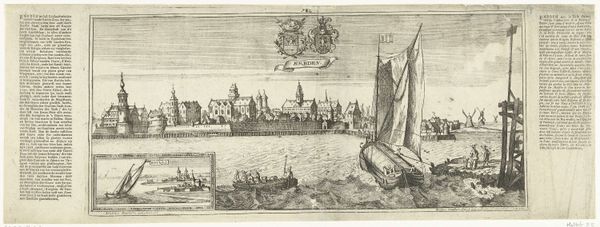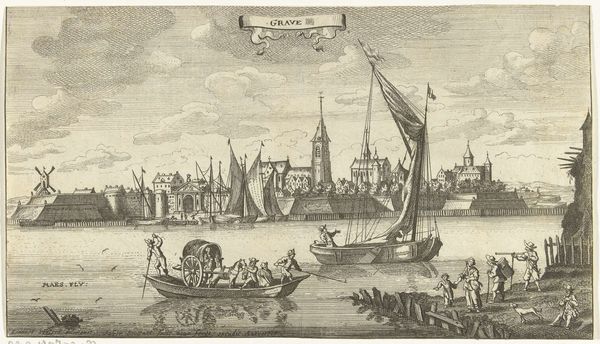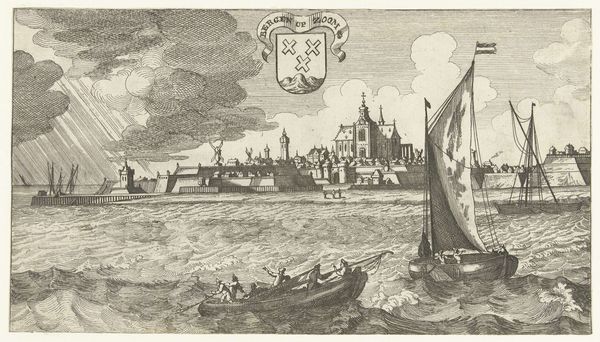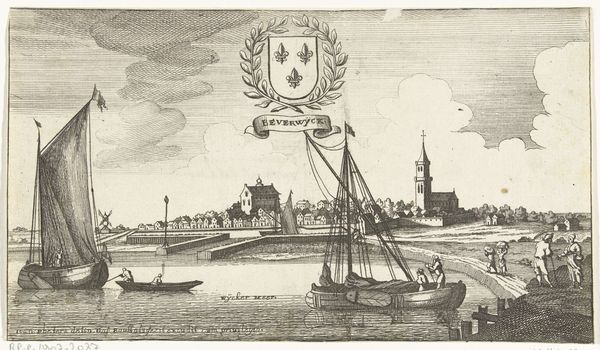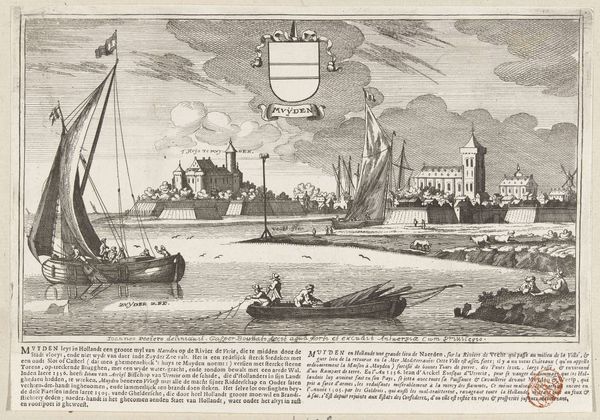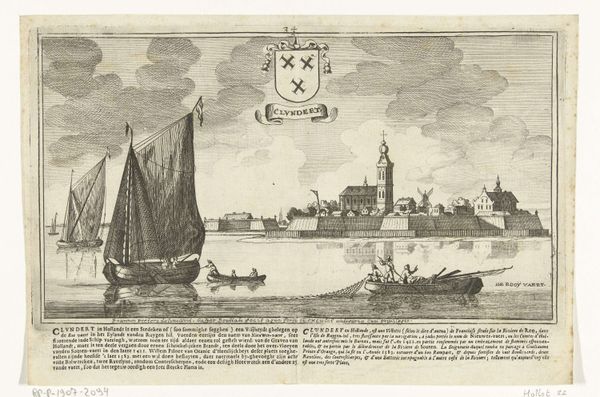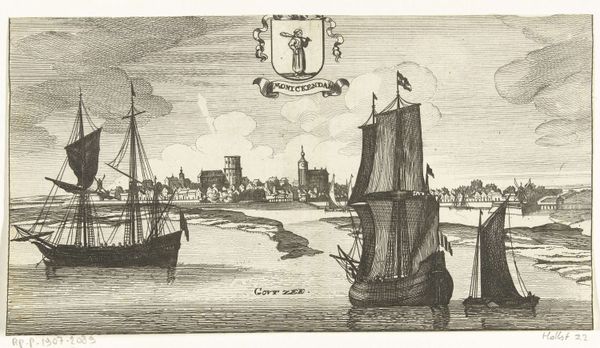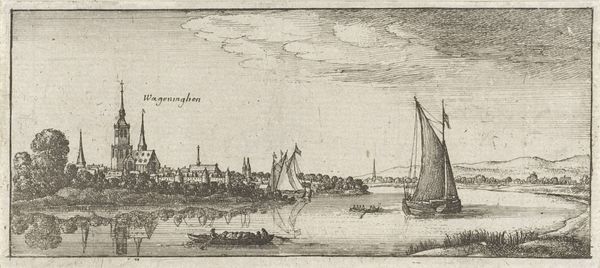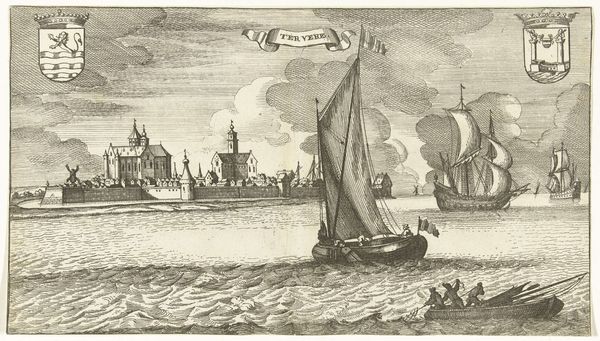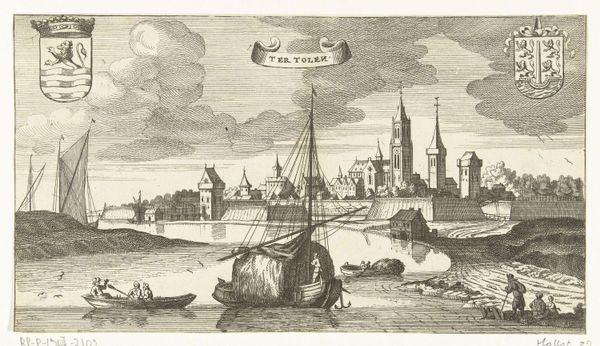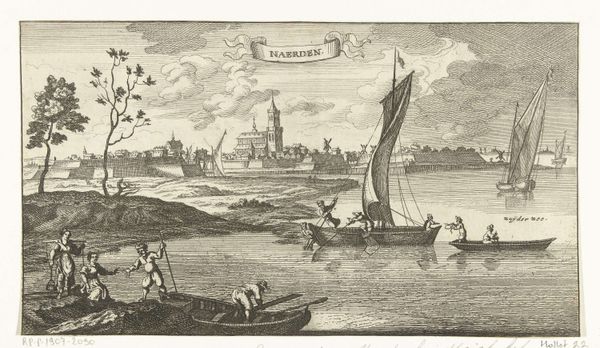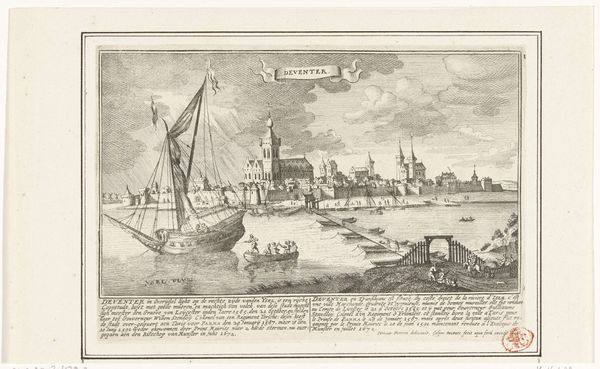
print, etching, engraving
#
dutch-golden-age
# print
#
etching
#
landscape
#
geometric
#
line
#
cityscape
#
engraving
Dimensions: height 135 mm, width 240 mm
Copyright: Rijks Museum: Open Domain
Editor: So, this is "Gezicht op Weesp" by Gaspar Bouttats, created in 1679. It's an etching and engraving, depicting a cityscape. The sheer amount of detail is fascinating. What draws your attention when you look at this piece? Curator: The lines, first and foremost. Notice how the method of engraving itself shapes our understanding of labor. Each line is a direct result of physical action, of someone pressing a tool into a copper plate. The image isn't just *of* Weesp, but a record of its *making*, revealing the material conditions of its creation. How do those repeated marks, like those describing the clouds or water, inform your view of the Dutch Golden Age? Editor: I guess it shows how important craftmanship was, maybe even celebrated? The repetition also makes me think of early industrialization. Curator: Precisely. Consider also how prints functioned within the broader economy. These weren’t unique, precious objects, but reproducible commodities that served to circulate images and, thus, ideas. What’s the implication when a town becomes a tradable item? It promotes its own production to potential traders, laborers and even visitors. This imagery drove production! Does that reshape how we consider landscapes today? Editor: It’s like promotional material and art all rolled into one! It also blurs the line between high art and more practical applications. Curator: Indeed. By examining the etching process itself, and how it was circulated, we can understand how the image both reflected and fueled the social and economic realities of 17th century Netherlands. Editor: I see that now. I hadn’t really thought about how the process influenced the art’s meaning and purpose. Thanks! Curator: Likewise. Thinking about art this way offers some insight into modern means of production as well, particularly photography and digital mediums.
Comments
No comments
Be the first to comment and join the conversation on the ultimate creative platform.
